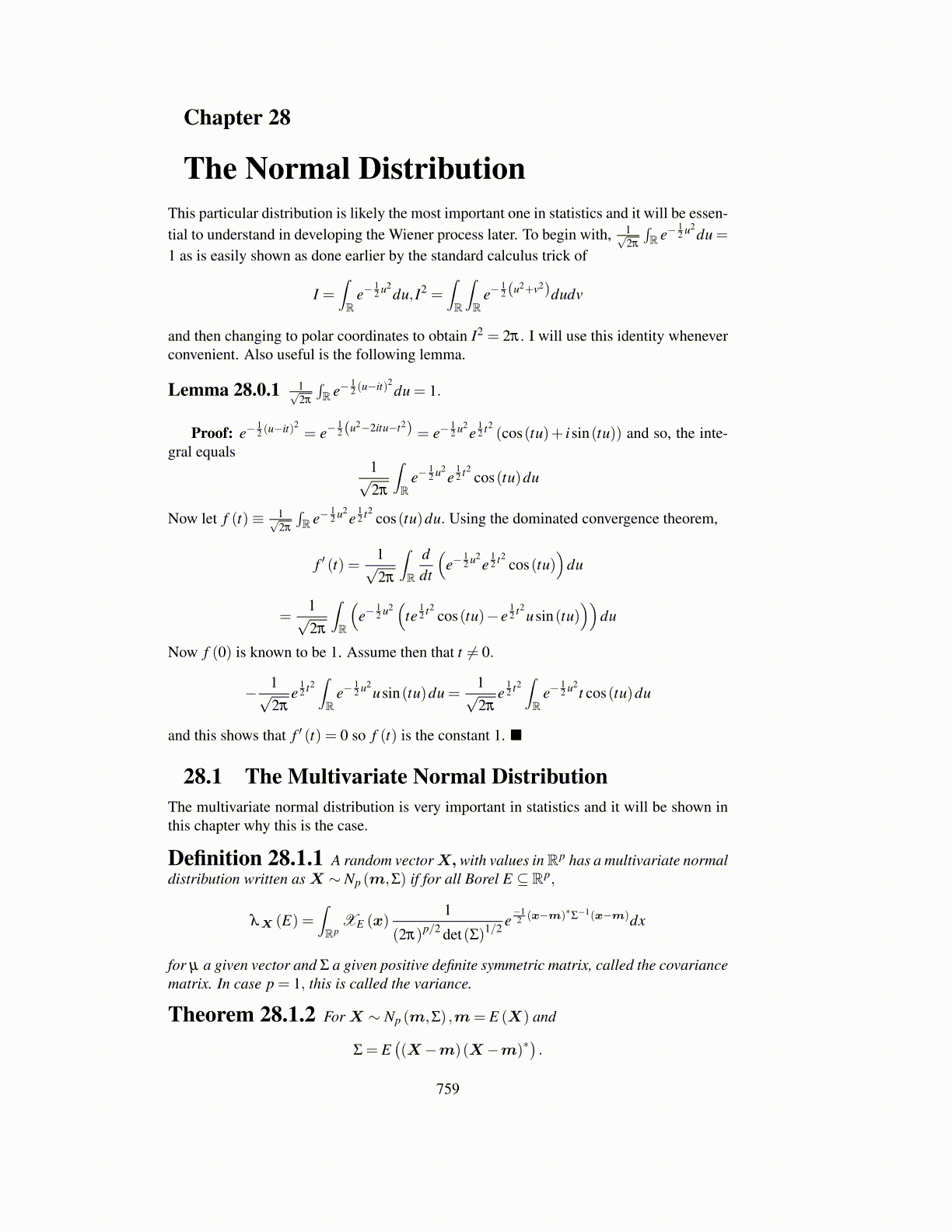
Chapter 28
The Normal DistributionThis particular distribution is likely the most important one in statistics and it will be essen-tial to understand in developing the Wiener process later. To begin with, 1√
2π
∫R e−
12 u2
du =
1 as is easily shown as done earlier by the standard calculus trick of
I =∫R
e−12 u2
du, I2 =∫R
∫R
e−12 (u2+v2)dudv
and then changing to polar coordinates to obtain I2 = 2π . I will use this identity wheneverconvenient. Also useful is the following lemma.
Lemma 28.0.1 1√2π
∫R e−
12 (u−it)2
du = 1.
Proof: e−12 (u−it)2
= e−12 (u2−2itu−t2) = e−
12 u2
e12 t2
(cos(tu)+ isin(tu)) and so, the inte-gral equals
1√2π
∫R
e−12 u2
e12 t2
cos(tu)du
Now let f (t)≡ 1√2π
∫R e−
12 u2
e12 t2
cos(tu)du. Using the dominated convergence theorem,
f ′ (t) =1√2π
∫R
ddt
(e−
12 u2
e12 t2
cos(tu))
du
=1√2π
∫R
(e−
12 u2(
te12 t2
cos(tu)− e12 t2
usin(tu)))
du
Now f (0) is known to be 1. Assume then that t ̸= 0.
− 1√2π
e12 t2∫R
e−12 u2
usin(tu)du =1√2π
e12 t2∫R
e−12 u2
t cos(tu)du
and this shows that f ′ (t) = 0 so f (t) is the constant 1. ■
28.1 The Multivariate Normal DistributionThe multivariate normal distribution is very important in statistics and it will be shown inthis chapter why this is the case.
Definition 28.1.1 A random vectorX,with values inRp has a multivariate normaldistribution written asX ∼ Np (m,Σ) if for all Borel E ⊆ Rp,
λX (E) =∫Rp
XE (x)1
(2π)p/2 det(Σ)1/2 e−12 (x−m)∗Σ−1(x−m)dx
for µ a given vector and Σ a given positive definite symmetric matrix, called the covariancematrix. In case p = 1, this is called the variance.
Theorem 28.1.2 ForX ∼ Np (m,Σ) ,m= E (X) and
Σ = E((X−m)(X−m)∗
).
759